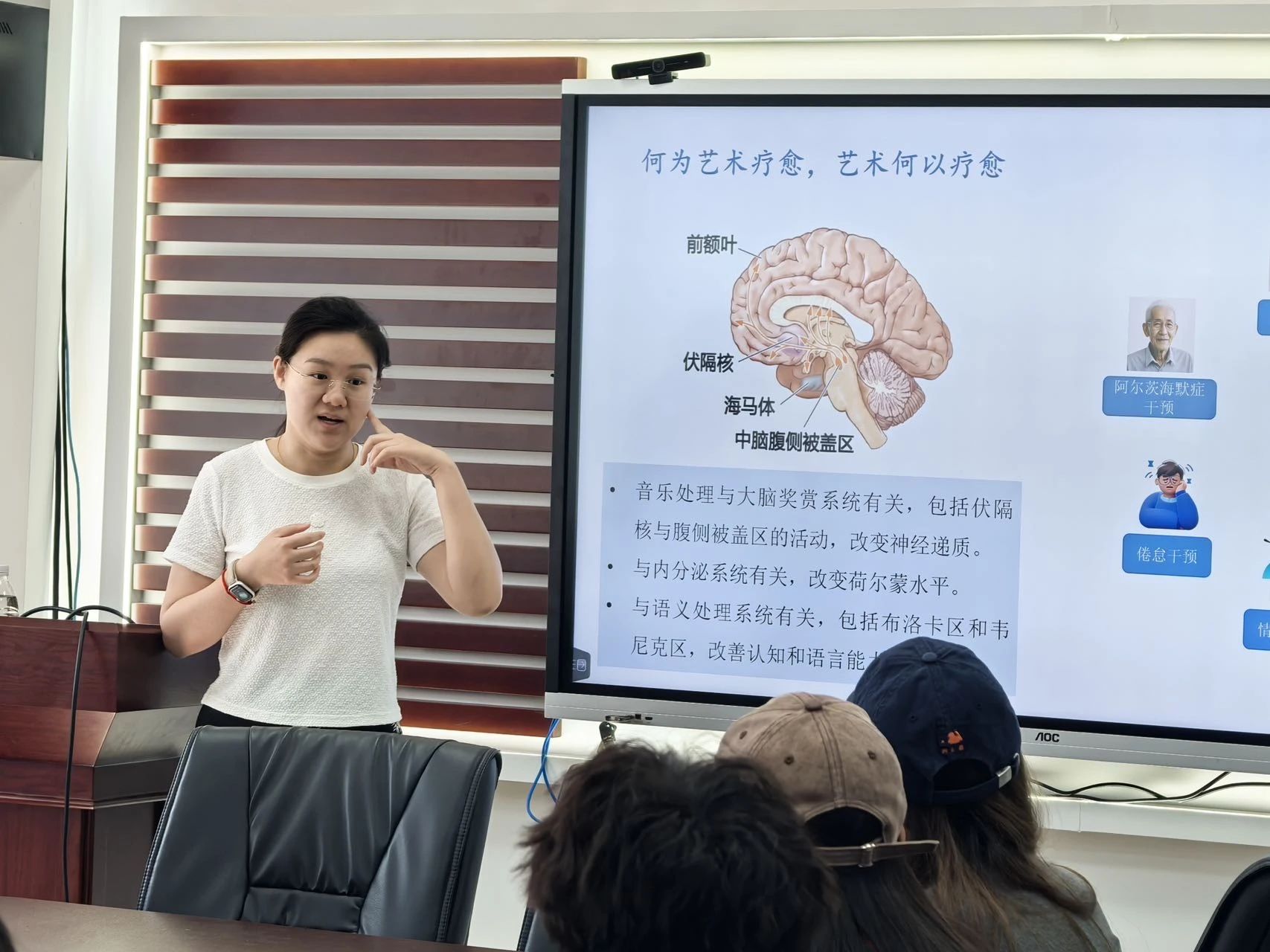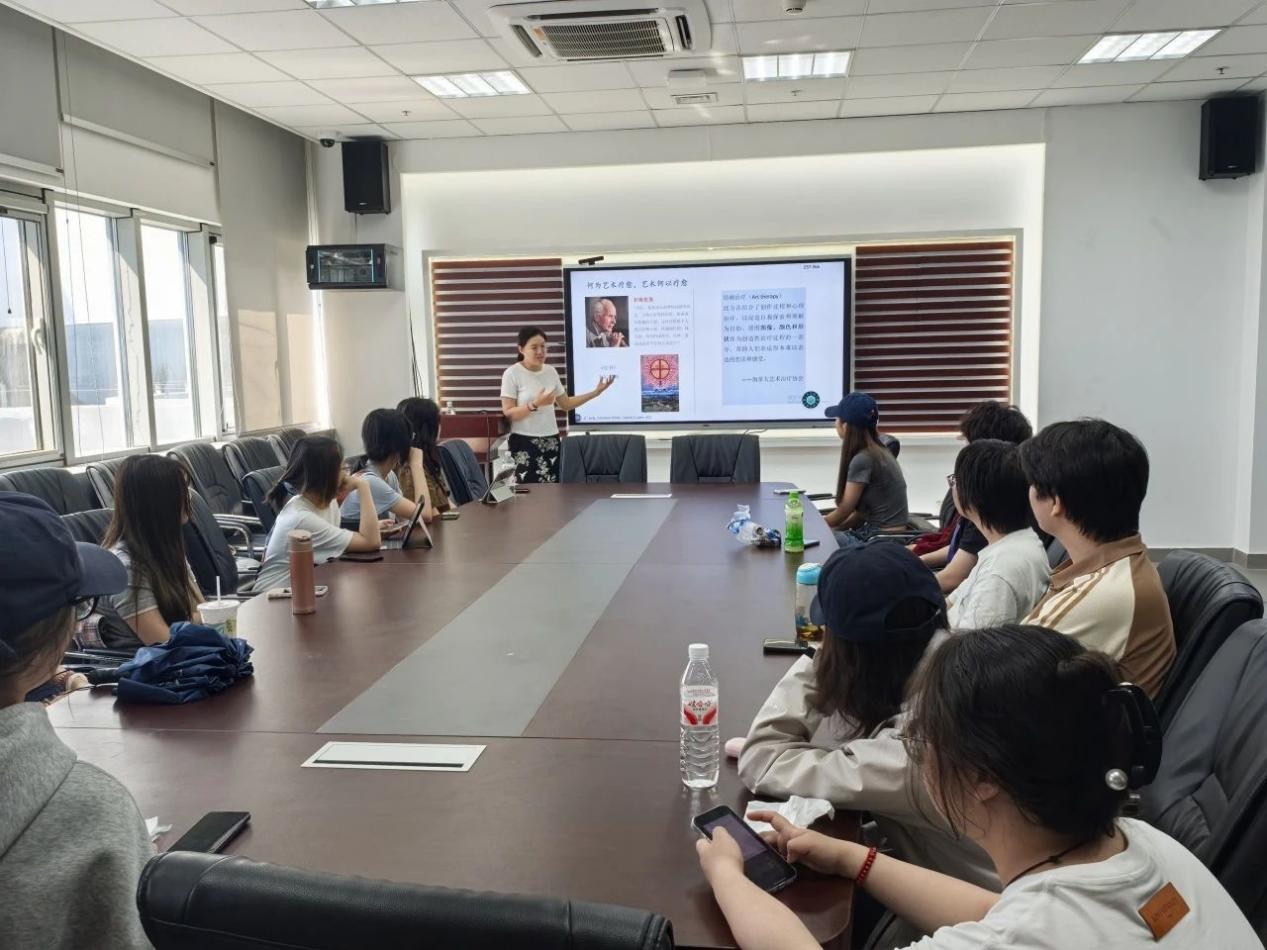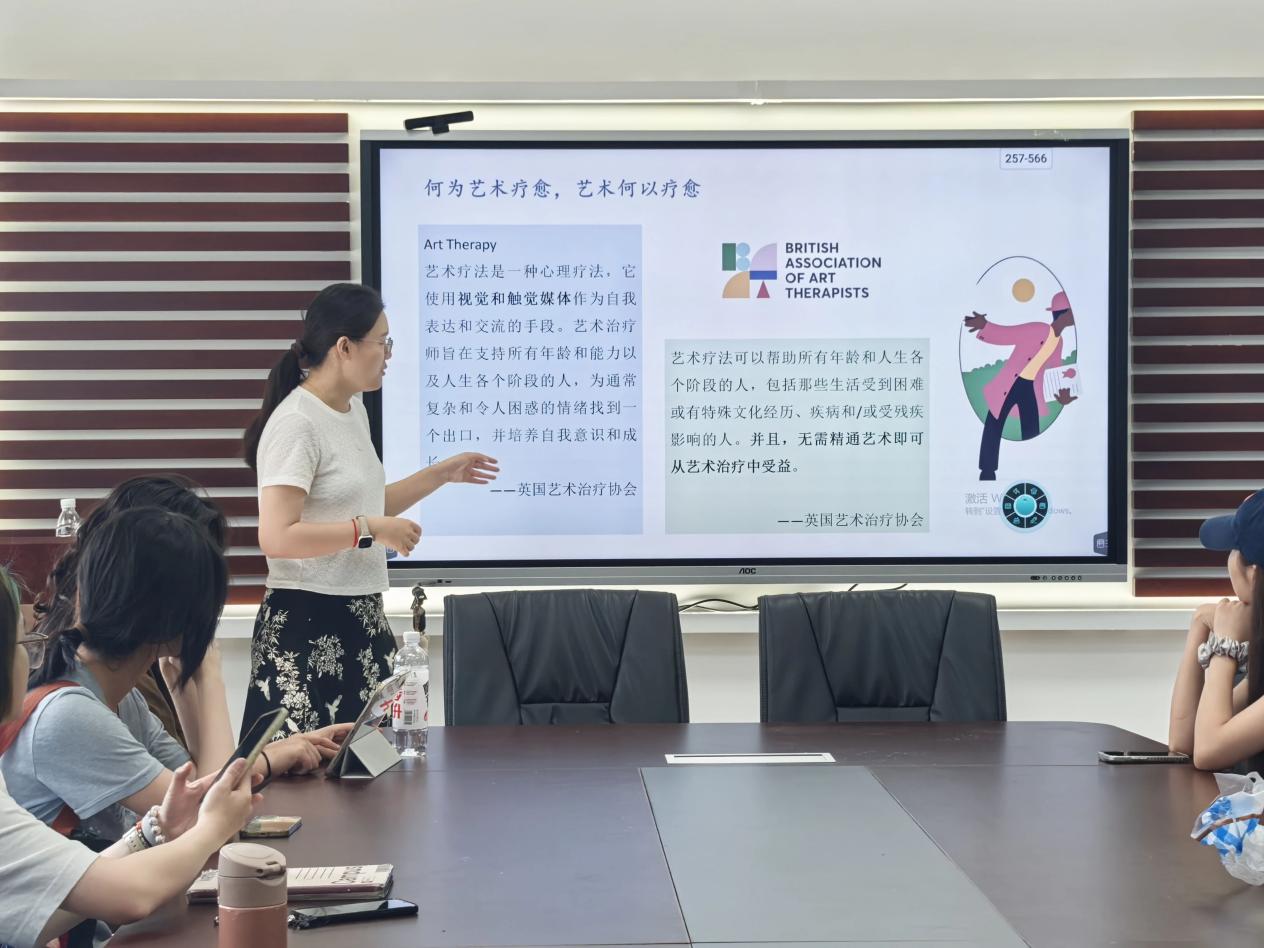In the whirlpool of information overload, art is not only the melody flowing from our fingertips or the lines winding beneath our pens—it is also a secret passage to the subconscious, carrying unspoken emotions and the pressure yearning to be released.
In this space, we harness the combined power of psychology and art. Through creative expression, we unravel confusion; through inner dialogue, we reconstruct internal order. Together, we embark on a healing journey where science and aesthetics converge.
On the morning of May 20, Ms. Yang Jingyi, a full-time teacher from the Mental Health Education and Counseling Center at Beijing University of Chemical Technology, delivered a psychological lecture titled “Nourishing the Mind with Beauty: How to Reflect on the Self Through Art” for students of the School of Art and Design.
In this lecture, Ms. Yang guided students through two main aspects: how to use art and how to apply helping and self-help techniques in the context of art therapy. Together, they explored the foundational theories, experienced related techniques, investigated the inner psychological mechanisms, and engaged with real-life case studies to gain a deeper understanding of the healing power of art.

Professor Yang offered a rich and multidimensional explanation of what art therapy is, and how art can be healing. From the perspective of embodied cognition, the body plays a central role in the cognitive process—it directly influences emotions, attitudes, thinking, memory, categorization, and the formation of concepts. In art therapy, music is processed through the brain’s reward system, involving activation of the nucleus accumbens and the ventral tegmental area, which in turn affects neurotransmitters. It is also linked to the endocrine system, impacting hormone levels, and engages the semantic processing areas of the brain—namely, Broca’s area and Wernicke’s area—thus improving cognition and language functions.
Drama therapy, Professor Yang explained, is an active, experiential, and embodied practice. It provides participants with a space to tell stories, resolve problems, express feelings, or release emotions. Through performance and role-play, individuals can actively explore the depth and breadth of their inner experiences.

During the lecture, Professor Yang encouraged students to explore further by reading key texts in the field, such as Principles and Practice of Expressive Arts Therapy by Paolo Knill, Focusing-Oriented Art Therapy by Laury Rappaport, and The Philosophy of Art by Hippolyte Taine.

Translated by: Zhu Ruiqi



